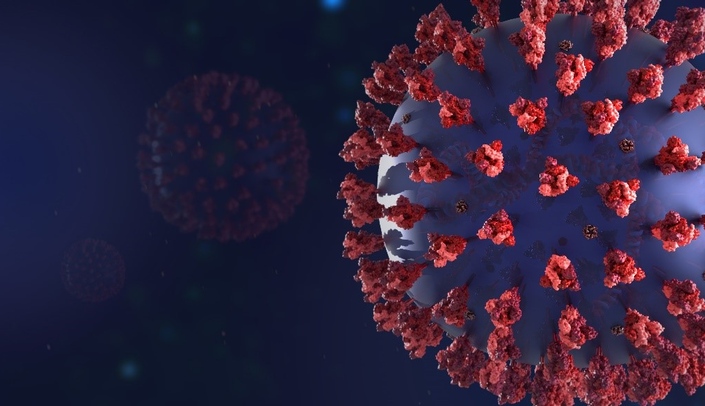Researchers Include: Joshua L. Santarpia, Danielle N. Rivera, Vicki Herrera, M. Jane Morwitzer, Hannah Creager, George W. Santarpia, Kevin K. Crown, David M. Brett-Major, Elizabeth Schnaubelt, M. Jana Broadhurst, James V. Lawler, St. Patrick Reid, and John J. Lowe
Determining the transmission dynamics of SARS-CoV-2 is imperative to minimizing the spread of the disease. Information on viral transmission is crucial as it drives national and international guidelines which, in turn, drives resource allocation, protection for healthcare workers, and, ultimately, implementation of public health interventions in order to mitigate the spread of the disease. Data from China published in the Journal of American Medical Association on February 7, 2020 (https://bit.ly/3e3DjVU) provided firm evidence of nosocomial transmission (i.e., the disease was transmitted in the hospital)—but the larger question remained whether the virus is also transmitted via aerosol or environmental contamination.
In mid-February, cruise ships began reporting significant transmission amongst their passengers. The Diamond Princess cruise ship reported 20% of its passengers tested positive (estimates suggest the percentage would likely be at or over 40% if all passengers were tested). With a number of cruise ships sharing similar reports, it became apparent that the ships have a unique permissive environment for SARS-CoV-2 to spread. When questioning why cruise ships are hot beds for spread, items of consideration include the close quarters (high density and frequent contact), key crew members as vectors (such as food service personnel), unknowns about air handling systems/airborne spread, and unknowns about waste water systems and fecal contamination.
The team at UNMC prepared to conduct environmental and air sampling as the cohort of Diamond Princess cruise ship passengers arrived at the Global Center for Health Security (GCHS). (The preliminary results have not yet been peer reviewed but are available at https://bit.ly/2LHhUWD.) The passengers’ severity of illness varied from mildly symptomatic to severe illness, requiring them to be admitted to either the Nebraska Biocontainment Unit (NBU) or the National Quarantine Unit (NQU) accordingly. Both environments are controlled with negative pressure rooms with highly-trained staff.
All samples were collected from three patient rooms in the NBU and nine patient rooms in the NQU between the fifth and ninth days of admission. Environmental samples were collected from room surfaces (ventilation grates, table tops, window ledges); personal items (cell phones, exercise equipment, television remotes, medical equipment); and toilets. Air samples were collected in two categories: high-volume air samples (next to bed, hallways adjacent to door); and low volume air samples (samplers affixed to personnel that moved within the space). Laboratory evaluation of these specimens was done via polymerise chain reaction (PCR) testing, similar to other studies previously mentioned.
Results of the sampling showed there was indeed broad environmental contamination. There was a statistically significant reduction in the level of environmental contamination in the samples that were positive between the first sampling and second sampling (which took place days apart) possibly indicating a reduction in viral shedding. Results support environmental cleaning markedly brings down the environmental contamination. There was significant contamination on air handling grates which indicates the potential of aerosol transmission of the virus. The toilets positivity rate was in keeping with other literature regarding the fecal oral transmission potential as well.
The results for the hallway and personal air samples came back positive. Despite negative pressure rooms, 66% of hallway air samples came back positive. It is important to note that the rooms are not equipped with anterooms. The NBU had the highest concentration of the virus in personal air samples indicating personnel moving in the space are being exposed to viral RNA at a higher level than some of the surfaces sampled. The room air samples tested positive at 63%. Two of three air samples were collected outside of six feet, supporting the idea that at least viral RNA is being carried via the air greater distances than six feet. The highest concentration in broad air contamination samples was a room of an individual on a low-flow nasal cannula with one liter of oxygen.
Conclusions made as a result of these samplings include environmental contamination is not necessarily linked to symptoms or severity of illness. PCR positive air samples outside of six feet provides additional evidence of aerosol transmission. Routine environmental disinfection strategies play a valuable role. Minimizing the number of health care providers that need to interact with the patient and implementing negative pressure rooms and barrier precautions should also be addressed and incorporated whenever feasible.
